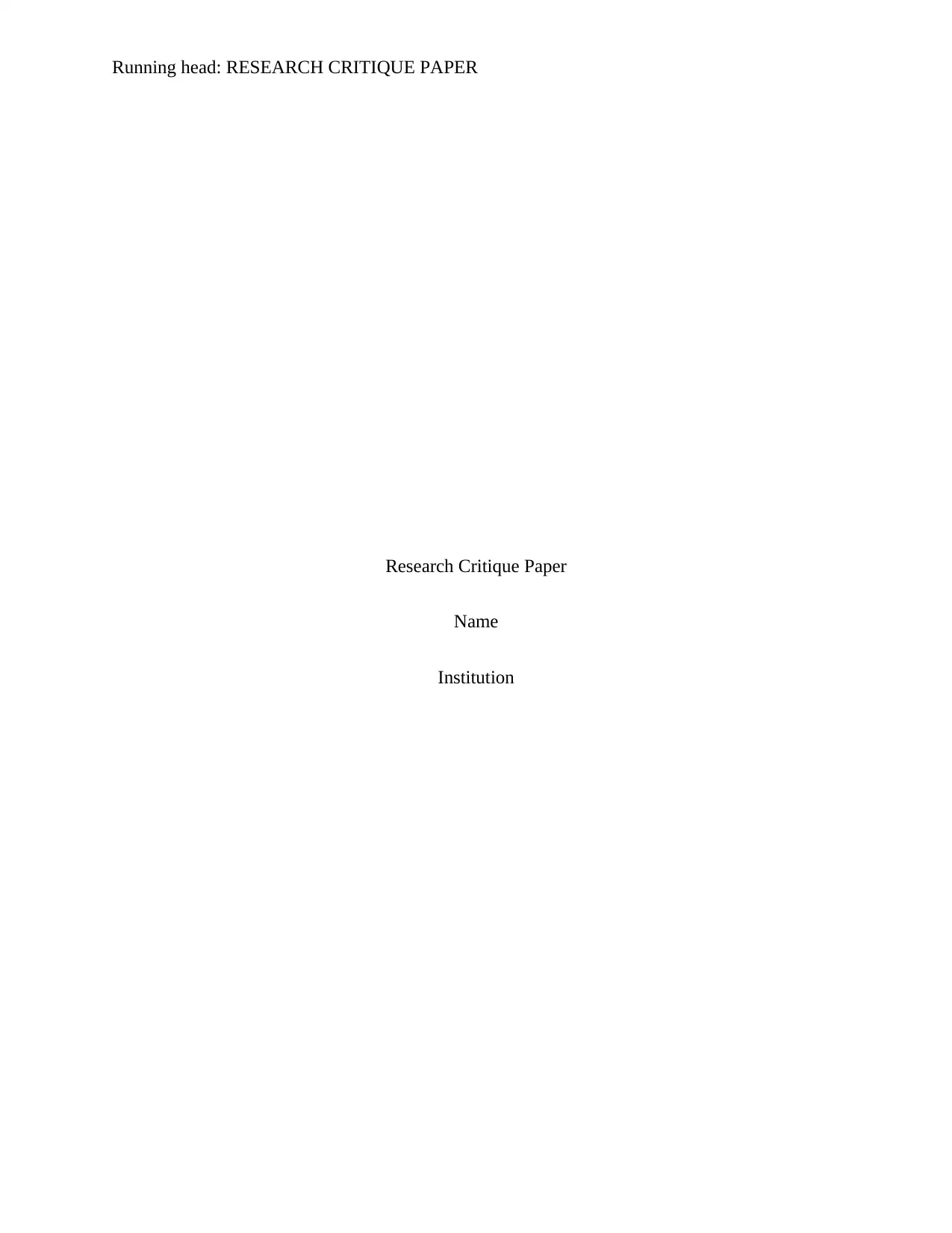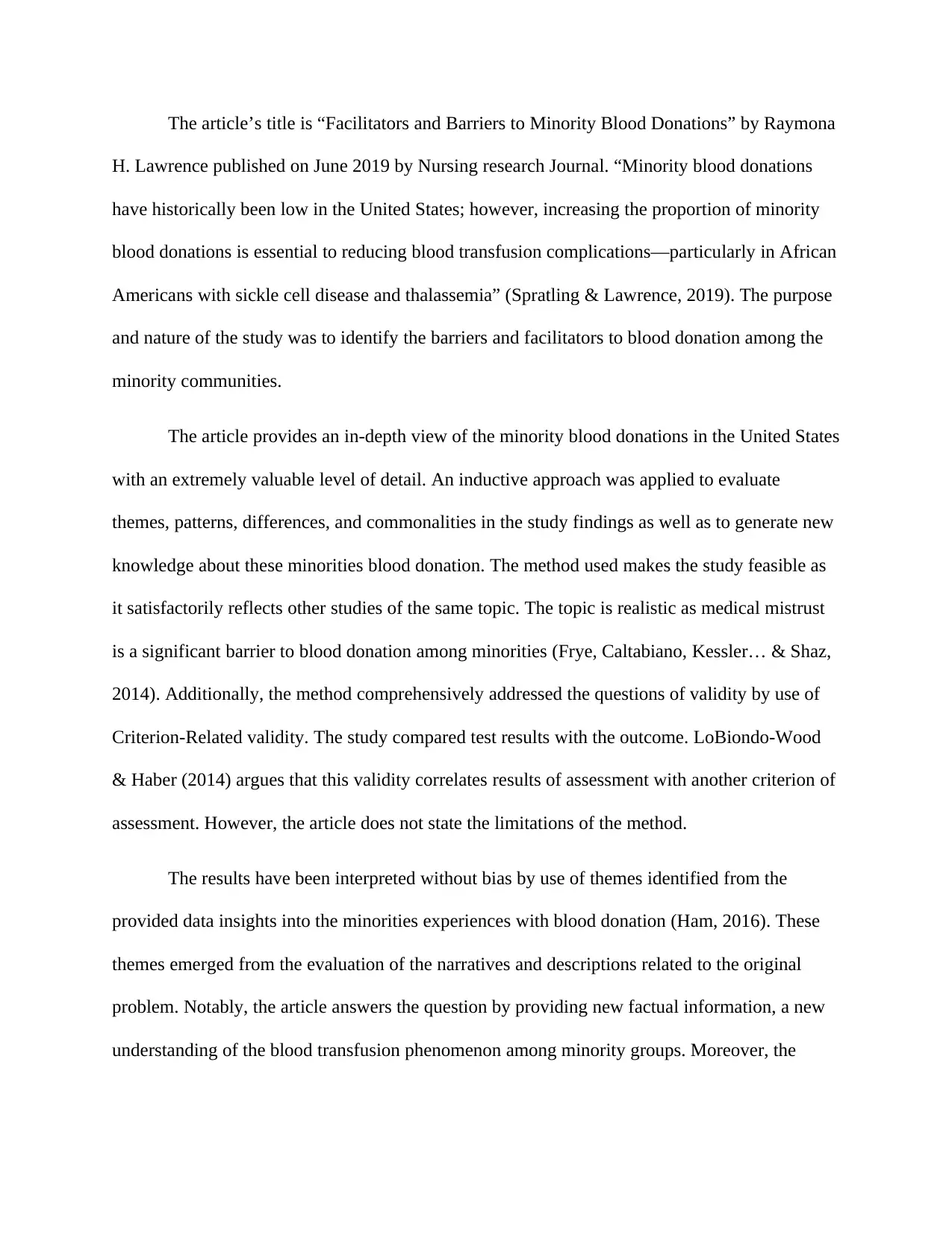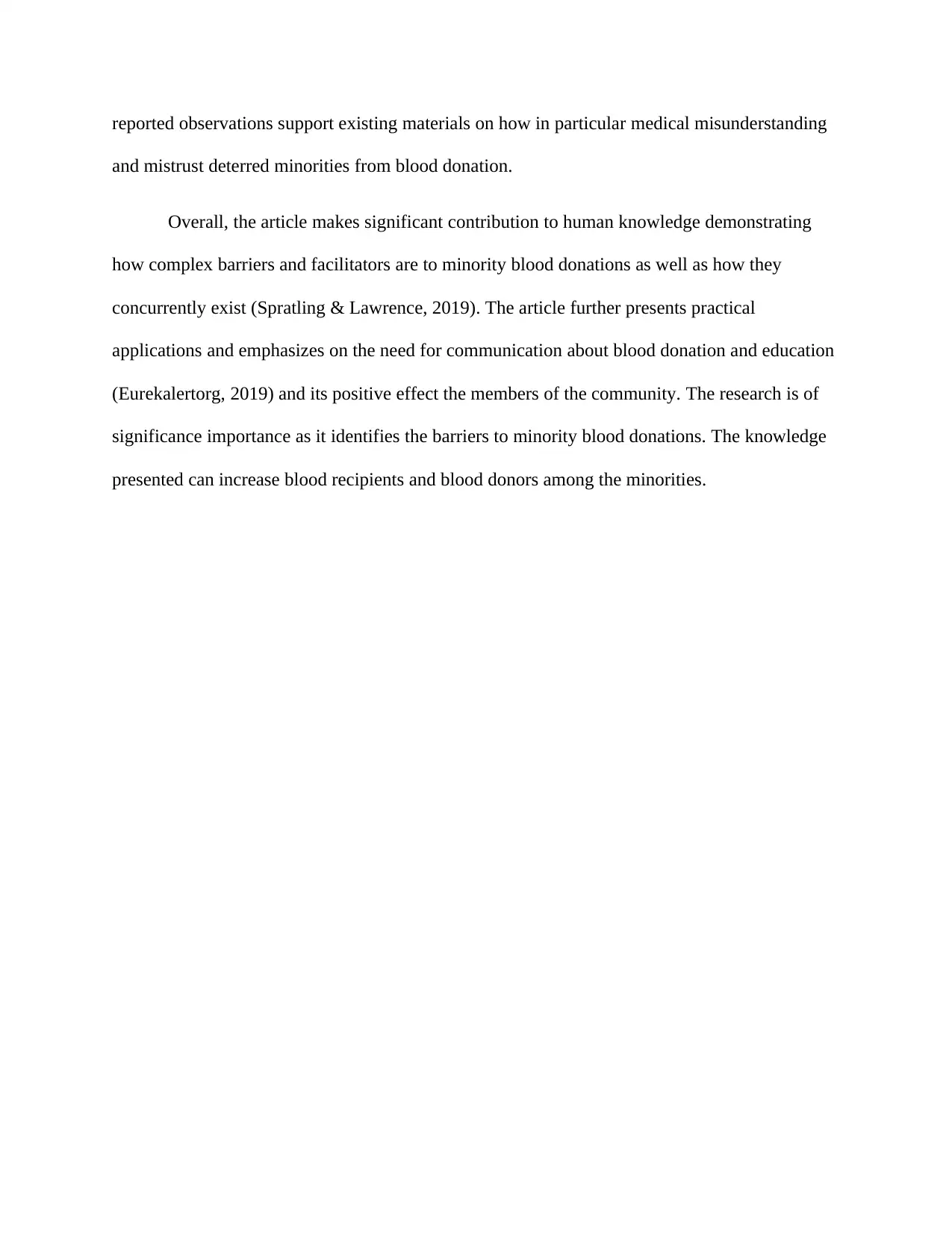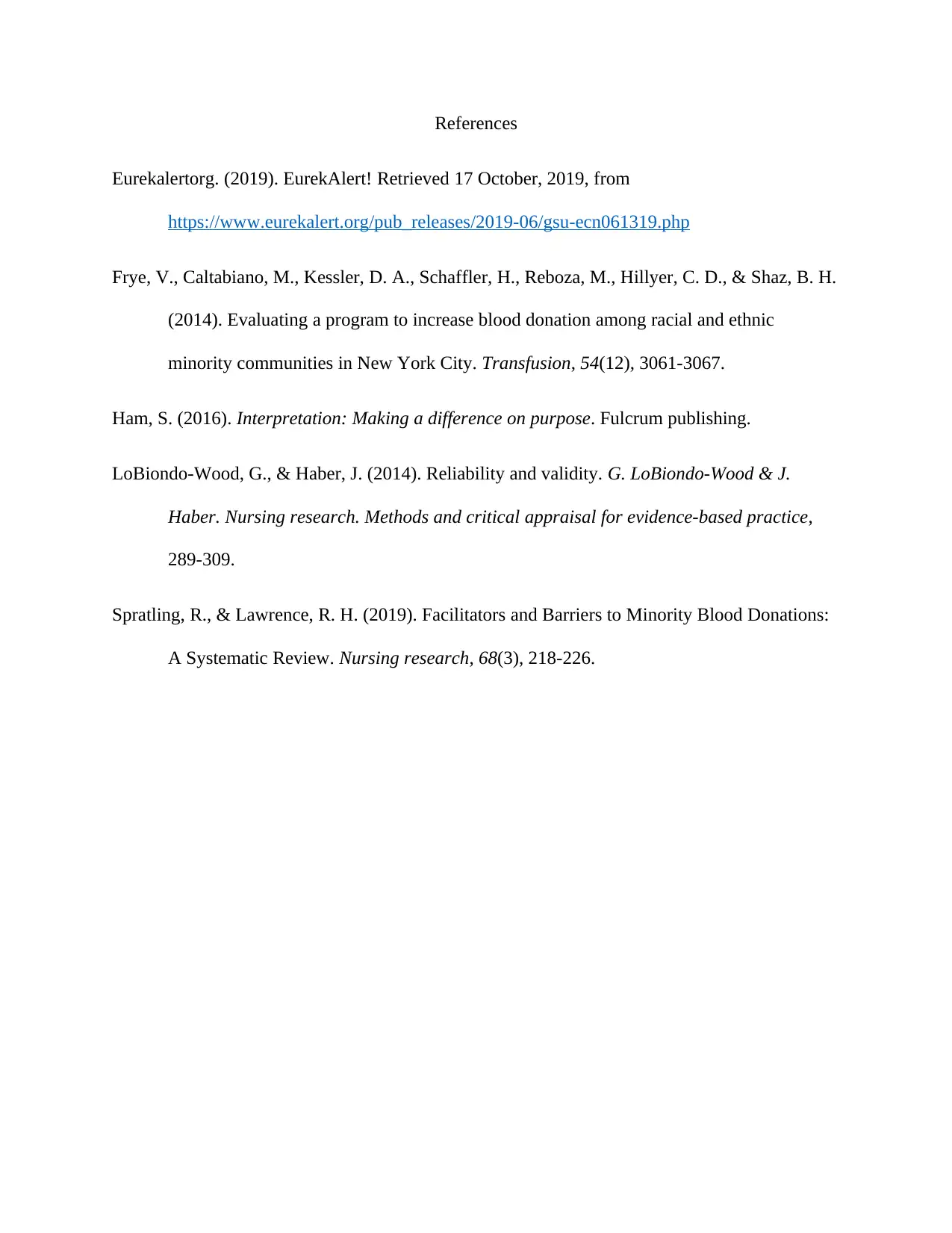Research Critique Paper: Analysis of Minority Blood Donation Research
VerifiedAdded on 2022/10/17
|4
|630
|12
Report
AI Summary
This research critique paper analyzes the article "Facilitators and Barriers to Minority Blood Donations" by Raymona H. Lawrence, published in the Nursing Research Journal. The paper examines the study's purpose, which was to identify barriers and facilitators to blood donation among minority communities in the United States, particularly focusing on the impact of medical mistrust and its relevance to conditions like sickle cell disease and thalassemia. The critique evaluates the inductive approach used to analyze themes and patterns, the method's feasibility, and the validity of the study. It also addresses the interpretation of results, the article's contributions to knowledge, and its practical applications, emphasizing the importance of communication and education regarding blood donation to increase blood recipients and donors among minorities. The paper highlights the significance of the research in identifying and addressing the complex factors influencing minority blood donation.
1 out of 4






![[object Object]](/_next/static/media/star-bottom.7253800d.svg)